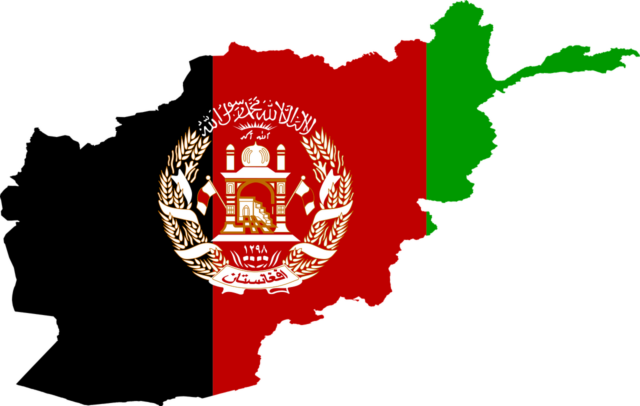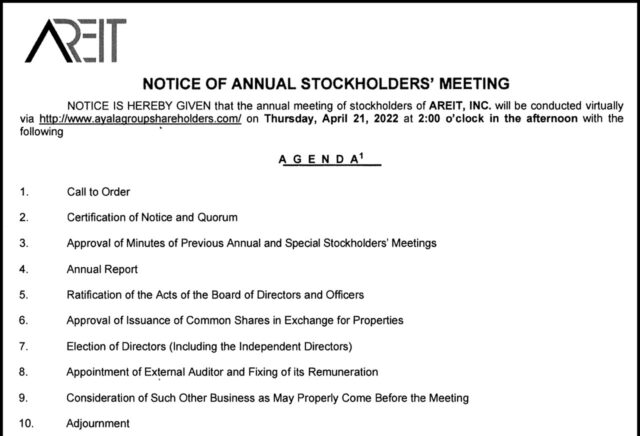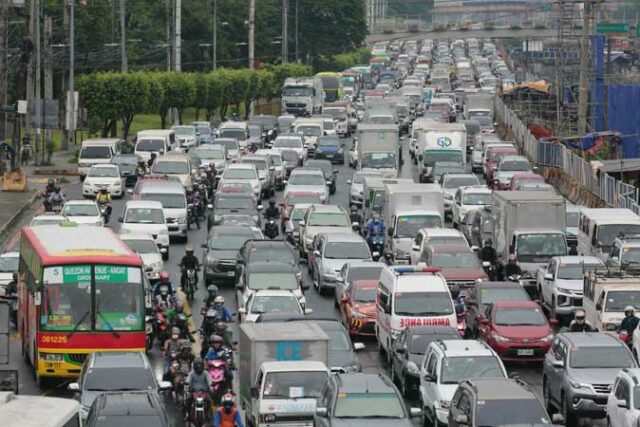BW Insights | Travel Now: Safe and Sustainable Travels in the New Normal
Living in the new normal becomes a chance to rethink how we travel by considering safety and sustainability.
As the tourism sector works towards recovery and plans its post-pandemic future, how can both travelers and the industry collaborate towards a safer and more sustainable travel?
Learn that and more this March 30 (Wednesday) at 11:00 a.m. in BusinessWorld Insights’ episode themed “Travel Now: Safe and Sustainable Travels in the New Normal” LIVE and FREE in BusinessWorld’s and The Philippine STAR’s Facebook pages.
This session of #BUSINESSWORLDINSIGHTS is supported by the British Chamber of Commerce of the Philippines, Management Association of the Philippines, Philippine Chamber of Commerce and Industry and The Philippine STAR.
Ukraine isn’t naive, Zelenskiy says after Russian pledge to scale down attack on Kyiv

LVIV, Ukraine/KYIV OUTSKIRTS – Ukraine reacted with skepticism to Russia’s promise in negotiations to scale down military operations around Kyiv and another city as some Western countries expected Moscow to intensify its offensive in other parts of the country.
Talks took place in an Istanbul palace more than a month into the largest attack on a European nation since World War Two that has killed or injured thousands, forced nearly 4 million to flee abroad and pummeled Russia’s economy with sanctions.
The invasion has been halted on most fronts by stiff resistance from Ukrainian forces who have recaptured territory even as civilians are trapped in besieged cities.
“In order to increase mutual trust and create the necessary conditions for further negotiations and achieving the ultimate goal of agreeing and signing (an) agreement, a decision was made to radically, by a large margin, reduce military activity in the Kyiv and Chernihiv directions,” Russian Deputy Defense Minister Alexander Fomin told reporters.
He made no mention of other areas that have seen heavy fighting, including around Mariupol in the southeast, Sumy and Kharkiv in the east and Kherson and Mykolaiv in the south.
“Ukrainians are not naive people,” Ukrainian President Volodymyr Zelenskiy said late on Tuesday.
“Ukrainians have already learned during these 34 days of invasion, and over the past eight years of the war in Donbass, that the only thing they can trust is a concrete result.”
MAJOR OFFENSIVE POSSIBLE
Russia has started moving very small numbers of troops away from positions around Kyiv in a move that is more of a repositioning than a retreat or a withdrawal from the war, the Pentagon said on Tuesday.
“We all should be prepared to watch for a major offensive against other areas of Ukraine,” spokesman John Kirby told a news briefing. “It does not mean that the threat to Kyiv is over.”
Britain’s Ministry of Defense in an intelligence update said: “It is highly likely that Russia will seek to divert combat power from the north to their offensive in the Donetsk and Luhansk regions in the east.”
Reuters could not immediately verify the claims made by either side.
The Moscow-backed self-proclaimed Donetsk People’s Republic in eastern Ukraine may consider joining Russia once it controls all of Ukraine‘s Donetsk region, its leader was quoted as saying. Kyiv has said any such move would have no legal basis.
Russia calls its assault a “special operation” to disarm and “denazify” Ukraine. The West says it launched an unprovoked invasion.
In Ukraine‘s besieged seaport Mariupol, thousands of civilians may have died, the head of the United Nations human rights mission in the country told Reuters on Tuesday.
Those who remain are suffering.
“We are eight people. We have two buckets of potatoes, one bucket of onions,” said Irina, an engineer, in her apartment where windows had been blasted out.
Elsewhere, Ukrainian forces have made advances, recapturing territory from Russian troops on the outskirts of Kyiv, in the northeast and in the south.
In the southern city of Mykolaiv, a missile blasted a hole through the main administrative building. Authorities said at least 12 people were killed and 33 injured. Read full story
Some analysts noted that Russia’s promise to reduce fighting mostly covered areas where it has been losing ground.
The general staff of the Ukrainian armed forces said Russia’s promise to curtail military operations in some areas was “probably a rotation of individual units and aims to mislead.”
The Russian military accused Ukrainian forces in cities under attack of using ceasefires to restore their combat readiness and set up firing points in hospitals and schools, Interfax news agency said.
DIPOLOMATIC PRESSURE
U.S. President Joe Biden will talk to the leaders of France, Germany, Italy and Britain on Tuesday to discuss the latest developments in Ukraine, the White House said.
French President Emmanuel Macron is scheduled to talk to Russian President Vladimir Putin on Tuesday.Read full story
Russian Foreign Minister Sergei Lavrov and U.S. deputy national security adviser for economics, Daleep Singh, will both visit India, which has called for a ceasefire but has refused to explicitly condemn Moscow. Read full storyRead full story
The U.N. food chief warned on Tuesday that the war was threatening to devastate the World Food Programme’s efforts to feed some 125 million people globally because Ukraine had gone “from the breadbasket of the world to breadlines.” Read full story
PROPOSALS
Ukrainian negotiators said that under their proposals, Kyiv would agree not to join alliances or host bases of foreign troops, but would have security guaranteed in terms similar to “Article 5”, the collective defense clause of the transatlantic NATO military alliance.
They named Israel and NATO members Canada, Poland and Turkey as countries that may give such guarantees. Russia, the United States, Britain, Germany and Italy could also be involved.
The proposals, which would require a referendum in Ukraine, mentioned a 15-year consultation period on the status of Crimea, annexed by Russia in 2014.
The fate of the southeastern Donbass region, which Russia demands Ukraine cede to separatists, would be discussed by the Ukrainian and Russian leaders.
Kyiv‘s proposals also included one that Moscow would not oppose Ukraine joining the European Union, Russia’s lead negotiator Vladimir Medinsky said. Russia has previously opposed Ukrainian membership of the EU and especially of NATO.
Medinsky said Russia’s delegation would study and present the proposals to president Putin.
To prepare a peace agreement, Medinsky later told the TASS news agency, “We still have a long way to go”. – Reuters
Relentless rains submerge Australian towns for second time in a month

SYDNEY – Heavy rains deluged Australia’s east coast on Wednesday, submerging roads and bridges, while tens of thousands fled their homes for the second time within weeks after fast-moving flood waters burst river banks and broke over levees.
Several towns in northern New South Wales already reeling after record floods over a month ago were pounded by an intense low-pressure system overnight. Some regions took a month‘s rainfall in under six hours, officials said.
Australia’s east coast summer has been dominated by the La Nina climate pattern, typically associated with greater rainfall, for the second straight year with rivers already at capacity after torrential rains. Sydney has already recorded 537 mm (21.1 inches) so far this month – its wettest March on record.
“Unfortunately overnight, our worst fears have been realised with significant heavy rainfall across already saturated landscapes,” New South Wales Emergency Services Minister Stephanie Cooke said during a media briefing.
In the northern New South Wales city of Lismore, among the worst impacted by record floods earlier in March, water levels in the city’s Wilsons river breached the levee height of 10.65 metres. Lismore, home to nearly 30,000 people, received around 400 mm (16 inches) of rain over a 24-hour period up to Wednesday morning, data showed.
There was no official warning that the levee had been breached after sirens malfunctioned, local media reported.
“Everything is falling apart in Lismore at the moment … second time in a month,” Mayor Steve Krieg told Nine Network.
The weather bureau forecast “bands of very localised heavier rainfall” to drop within a few hours on Wednesday, potentially leading to life-threatening flash floods with up to 200 mm predicted to pummel many regions.
Kevin Cocciola, a farmer near Lismore who lost his city office in the deluge early in March, said he has never seen successive major flooding events within “a matter of three weeks”.
“I hope it doesn’t get as high as it did three weeks ago but Lord only knows,” he told ABC television. – Reuters
China, U.S., Russia, Pakistan to hold talks on Afghanistan – China, U.S. say

BEIJING/WASHINGTON – A top U.S. diplomat will meet this week in China to discuss issues in Afghanistan with his Chinese, Russian and Pakistani counterparts, the Chinese foreign ministry and the State Department said on Tuesday.
The United States understands that China has invited Taliban representatives to the talks in Tunxi, a State Department spokesperson said.
Chinese special envoy for Afghanistan Yue Xiaoyong will host the meeting, said Wang Wenbin, a Chinese foreign ministry spokesman.
Russian Foreign Minister Sergei Lavrov has arrived in Tunxi for the talks, Interfax news agency cited a ministry spokeswoman as saying late on Tuesday. Lavrov has largely stayed in Russia since last month’s invasion of Ukraine but did travel to Turkey for talks with his counterpart from Kyiv.
Tom West, the U.S. special representative for Afghanistan, will attend the talks of the so-called Extended Troika: the three world powers plus Pakistan, the State Department spokesperson said.
The talks come against the backdrop of Russia’s invasion of Ukraine and as Afghanistan suffers an economic and humanitarian crisis worsened by a financial aid cutoff following the Taliban takeover as U.S.-led troops departed in August.
They also come amid widespread condemnation of the Taliban’s U-turn last week on allowing girls to attend public high schools, which has sparked consternation among funders ahead of a key aid donors conference, a U.N. official said on Tuesday. Read full story
The retention of the ban prompted U.S. officials to cancel talks in Doha with the Taliban and a State Department warning that Washington saw the decision as “a potential turning point in our engagement” with the militants. Read full story
The United States believes that it shares with other Extended Troika members an interest in the Taliban making good on commitments to form an inclusive government, cooperate on counterterrorism and rebuild the Afghan economy, the State Department spokesperson said.
The meeting takes place while foreign ministers from Afghanistan‘s neighbors meet on Wednesday and Thursday in the eastern Chinese province of Anhui, Wang said.
That meeting will be chaired by Chinese Foreign Minister Wang Yi and attended by Afghan acting Foreign Minister Amir Khan Muttaqi, and diplomats from Pakistan, Iran, Russia, Tajikstan, Turkmenistan, Uzbekistan, Indonesia and Qatar.
China Evergrande to sell Crystal City Project for $575 mln
China Evergrande Group 3333.HK said on Wednesday it will sell its Crystal City Project in the eastern city of Hangzhou for 3.66 billion yuan ($575 million) to two state-owned firms as the group’s liquidity issues dampen the progress of its projects.
The firm is selling the land-use and building ownership rights for the project, which is under construction, to Zhejiang Zhejian Real Estate Group and Zhejiang Construction Engineering Group, Evergrande said in a filing.
It will use the proceeds to repay construction fees of 920.7 million yuan owed to Zhejiang Construction Engineering and the rest for its own general working capital. The deal is expected to post a gain of about 216 million yuan.
Saddled with over $300 billion in liabilities, Evergrande has been struggling to repay suppliers, creditors and complete projects. State-owned enterprises have stepped in to help with the debt restructuring process and taken over some of its assets to quell market concerns about a disorderly collapse.
In a separate filing late on Tuesday, Evergrande said it had set up an independent committee to investigate how banks seized 13.4 billion yuan in deposits of its property services arm, Evergrande Property Services Group 6666.HK, that had been pledged as security for third party guarantees.
Preliminary investigation has found the pledge of the relevant deposits and the enforcement by banks took place in 2021, Evergrande said.
Shares of its unit China Evergrande New Energy Vehicle Group 0708.HK resumed trading on Wednesday and plunged up to 14.5%.
They have been suspended since last Monday pending news of the enforcement. But trading will be halted again on Friday per listing rules as the firm will not be able to publish its 2021 financial results by March 31.
Shares of Evergrande and Evergrande Property Services have both been suspended since last Monday. – Reuters
India bets on satellite broadband to bridge rural digital divide
DUNGE, India – The day started well for Sayi Gharat. The nine-year-old schoolgirl managed to connect easily to her online science class, as she sat on a daybed in her grandmother’s home in western India.
But Sayi knew she would not be able to stay in the same spot for long due to the shaky mobile internet connection she relied on for her education as classes in Dunge village and across India moved online when COVID-19 struck in March 2020.
“Sometimes the network is good, sometimes it’s not good: she has to move from one room to another, from one corner to another, and even go outside,” Sayi’s grandmother, Chandrakamalkar Gharat, told the Thomson Reuters Foundation.
Two years on, Sayi is back at school, but staying online all day remains a challenge for her and tens of millions of others with poor connectivity in rural India, where the digital divide hampers education, livelihoods and healthcare access.
“It’s very hard for her – we sometimes wonder if it’s worth the trouble,” Gharat said.
There are currently more than 800 million internet subscribers in the nation of 1.3 billion people, according to the telecom regulatory authority (TRAI). Yet in rural India, only about 38% of the population is connected to the internet.
The government has made universal broadband a priority under its Digital India programme to improve governance through technology, with projects such as the Bharat Net rural broadband project aimed at connecting about 650,000 villages nationwide.
But digital inclusion “continues to remain a distant reality for most parts of rural India“, marred by delays in implementation, and a lack of access and digital literacy, according to a report from the Indian Council for Research on International Economic Relations (ICRIER), a policy think-tank.
That might now change due to recent policy moves including easier approvals for satellite broadband network rollouts, and the imminent launch of satellite broadband from India‘s Bharti Airtel and Jio Platforms, Elon Musk’s Starlink, and others.
“With the saturation of urban markets, there is keen interest among service providers to increase rural subscribership,” said Mansi Kedia, a fellow at ICRIER, and a telecoms and internet expert.
“But rural connectivity should look beyond the dominant technology – optical fibre and mobile communications. The use case for satellite broadband is the strongest in rural areas – it can help achieve connectivity at much lower costs,” she said.
CHEAP MOBILE DATA
The United Nations stated in 2016 that internet access is a human right, adding a clause to the Universal Declaration of Human Rights on the “promotion, protection and enjoyment of human rights on the internet,” including for women, girls, and those impacted by the digital divide.
India was among several countries that opposed the amendment at the time, and the country has among the most internet shutdowns in the world.
It also has one of the lowest charges for mobile data globally, helping mobile wireless to account for the bulk of the country’s 834 million internet subscribers. Only about 24 million subscribers have fixed internet connections.
Besides government programmes, private-sector and philanthropic initiatives have also helped build last-mile connectivity and increase digital literacy in rural areas.
“The big telcos will only go into rural areas if it makes economic sense, as it’s more expensive to build infrastructure, and it is for a customer base with less ability to pay,” said Michael Ginguld, a director at AirJaldi, which provides affordable networks in rural and semi-urban areas in India.
“The deeper you went into rural areas, the less demand there was – they can watch a show or a film on their phones. But this is changing, and COVID has hastened that shift, with demand for better connectivity to access education or healthcare,” he said.
AirJaldi, which has partnered with Google, Facebook and Microsoft on internet projects, reaches more than 200,000 users in about 1,500 villages in India, including some that had no mobile connectivity previously.
CLIMBING TREES
Globally, three-quarters of students who cannot access remote learning come from rural areas or poor households, according to the U.N. children’s agency (UNICEF).
During COVID-19 lockdowns, Indian media carried reports of students and teachers in villages climbing trees or trekking up hills in an attempt to get online.
Such anecdotes may soon be a thing of the past.
Earlier this year, OneWeb and Hughes Communications India – a joint venture with Bharti Airtel – said they had an agreement to bring low Earth orbit (LEO) satellite broadband services, “especially in areas outside the reach of fibre connectivity”.
Last month, Jio Platforms – owned by billionaire Mukesh Ambani – said it would launch satellite-based broadband services in India with Luxembourg-based telecom company SES, using geostationary and medium Earth orbit (MEO) satellites.
Also in the mix is Musk’s Starlink, which is waiting for its licence in India, and has already launched about 2,000 of its intended 42,000 LEO satellites to deliver internet across the globe. Amazon’s Project Kuiper is another potential entrant.
“The fixed costs for satellite broadband are high, but it has a lower cost of implementation for larger geographical coverage and lower population density, as compared to technologies such as optical fibre cable,” said Kedia.
Residents of the southern Indian village of Sittlingi, who once travelled to another village about 20 km (12 miles) away to get online, could not afford to wait for satellite broadband.
Nonprofits the Digital Empowerment Foundation and the Internet Society stepped in during the pandemic, and established a stable internet connection in the village using free, unlicensed spectrum.
That meant students were able to resume classes, farmers could sell their produce online, and an indigenous crafts centre found new buyers, said Lalitha Regi, manager of Porgai, the crafts centre.
“It was like a celebration – getting connectivity,” she said. – Reuters
Philippines wants government workers to report early to ease traffic
The Philippines is considering earlier work hours for government offices to ease traffic congestion in the capital that has worsened as virus restrictions eased.
The Metropolitan Manila Development Authority, which sets policies on traffic in the capital region, asked President Rodrigo Duterte to move government work an hour earlier to a 7 a.m. to 4 p.m. shift.
This will allow state workers to avoid the rush hour, the body’s chairman Romando Artes said at a televised briefing late Tuesday.
A four-day work week of 10 hours each day can also be implemented, Artes said, echoing an earlier proposal from Economic Planning Secretary Karl Chua. Pending a study on overtime pay required by law, an alternative proposal is to allow workers to work from home once a week to help lessen the number of vehicles on the road, Artes said.
Traffic jams have returned in the capital following the easing of movement restrictions as Covid-19 infections subside.
The governing body in charge of the capital region also presented a proposal to build elevated walkways and bicycle lanes to encourage workers to walk or use bikes on their way to work. Duterte whose term ends in June wants the proposals to be studied. — Bloomberg
MPIC partners with BEST, bXTRA for Trash to CashBack Program

Metro Pacific Investments Corporation (MPIC), the country’s leading infrastructure investment company, further reinforces its thrust towards sustainability, after signing a Memorandum of Agreement (MOA) with the Basic Environmental Systems & Technologies, Inc. (BEST) and BEEPXTRA Philippines Inc. (bXTRA) for their Trash to CashBack program.
Through this partnership, the company aims to help minimize waste pollution through the promotion of proper segregation at source and recycling that supports a circular economy. MPIC will collaborate with BEST and bXTRA to implement an effective and cost-efficient solid waste management program.
“Our commitment to national progress always takes environmental impact into utmost consideration,” said MPIC Chairman and President Manuel V. Pangilinan. “Implementing programs like this with like-minded organizations help us further achieve our goal of creating a cleaner, greener, and more sustainable Philippines.”
Transforming Trash to Cash
BEST and bXTRA initiated the program to encourage households, offices, other establishment and communities to properly segregate recyclables from their sources, referred to as My Basurero Eco-Communities or MBE-Cs. In the process, they receive environmental points equivalent to CashBack in order to encourage them and make this practice sustainable.
“Partnering with MPIC, a company that embeds environmental stewardship in its strategies, helps us ensure the cost-effective implementation of solid waste management programs,” says BEST Senior Vice President Dwight Ramos. “With our partnership, we are together in pushing forward the new NIMBY or ‘Now In My Backyard’, where each one of us ensures that our waste is reused, converted into new products in the circular economy, and supports sustainable living.”
bXTRA President and Managing Director Jan Vincent Mercado acknowledged the importance of this partnership to be implemented at the community level, particularly at the communities along Laguna de Bay, to increase awareness on waste management. MPIC, along with its subsidiary Maynilad, have developed the Laguna de Bay Welfare Awareness Program (LAWA) to jointly protect the Laguna Lake and its surrounding provinces, cities, and towns.
“This program is a mode of prevention from the actual collection of waste in Laguna Lake, as we are actively preventing the waste from physically reaching the lake,” says Mercado. “This is a very promising partnership, and we believe that with everybody’s help, we can really make a difference.”
MPIC will implement the Trash to CashBack program as part of its strategy to create a sustainability mindset among its employees. By end of the year, the environmental points will be converted to grocery items, which will be distributed to its partner communities in low-income areas.
“As we tackle climate change, we must also take urgent action to address the growing concern on waste pollution that causes adverse effects on the environment, people’s health, and even economic growth,” says Chief Finance, Risk, and Sustainability Officer Chaye A. Cabal-Revilla. “We hope that by being good environment stewards, we will create more awareness and contribute to our country’s sustainable development.”
MPIC’s partnership with BEST and bXTRA is aligned with Gabay Kalikasan, one of the MVP Group’s Gabay Advocacies for a Sustainable Philippines. It is also in line MPIC’s efforts to contribute to the United Nations Sustainable Development Goals (SDG), particularly SDG 11 Sustainable Cities and Communities and SDG 12 Responsible Consumption and Production.
Spotlight is BusinessWorld’s sponsored section that allows advertisers to amplify their brand and connect with BusinessWorld’s audience by enabling them to publish their stories directly on the BusinessWorld Web site. For more information, send an email to online@bworldonline.com.
Join us on Viber to get more updates from BusinessWorld: https://bit.ly/3hv6bLA.
Blockchain project Ronin hit by $615 million crypto heist
LONDON – Blockchain project Ronin said on Tuesday that hackers stole cryptocurrency now worth almost $615 million from its systems, in what would be one of the largest cryptocurrency heists on record.
The project said that unidentified hackers on March 23 stole some 173,600 ether tokens and 25.5 million USD Coin tokens. At current exchange rates, the stolen funds are worth $615 million, but they were worth some $540 million at the time of the attack.
This makes it the second-largest crypto theft on record, according to blockchain analysis firm Elliptic.
Ronin is used to power the popular online game Axie Infinity, which uses non-fungible tokens (NFTs) and is the biggest NFT collection by all-time sales volume, according to NFT market tracker CryptoSlam.
Ronin said in a blog post that the hacker had used stolen private keys – the passwords needed to access crypto funds – to make off with the funds.
Ronin said it had discovered the hack on Tuesday. “We are working directly with various government agencies to ensure the criminals get brought to justice,” it said, adding that it was discussing with Axie Infinity how to ensure no users’ funds were lost.
Ronin‘s users are unable to withdraw or deposit funds on the network, it said.
Ronin did not immediately respond to a request for comment sent via Twitter. It said it was working with major blockchain tracker Chainalysis to trace the stolen funds. Most of the funds are still in the hacker’s digital wallet, Ronin said.
Hacks have long plagued crypto platforms.
The cryptocurrency arm of Jump Trading said last month it had restored more than $320 million to crypto platform Wormhole after the decentralized finance site was hit with one of the largest crypto heists on record. Read full story
Last August, hackers behind likely the biggest ever digital coin heist returned nearly all of the $610 million-plus they stole from the DeFi site Poly Network. Read full story
In 2018, digital tokens worth some $530 million were stolen from Tokyo-based platform Coincheck. Mt. Gox, another Japanese exchange, collapsed in 2014 after hackers stole half a billion dollars of crypto.
Ronin is developed by Singapore-based game studio Sky Mavis, which owns Axie Infinity. Sky Mavis does not give contact details on its website. It did not immediately respond to a request for comment sent via LinkedIn. – Reuters
Powering the Philippines’ energy transition
By Bjorn Biel M. Beltran, Special Features Writer
Energy has long been a topic of conversation when it comes to envisioning the society of the future. Advancements in energy have historically led to massive surges in technological progress, with the most notable being the first industrial revolution in which the use of fuel sources like coal and steam power transitioned mankind from an agrarian and handicraft society to one dominated by industry and machine manufacturing.
Many leaders are pushing for a new, similar transition today. In November last year, the United Nations Secretary General António Guterres issued a global road map to achieve a radical transformation of energy access and transition by 2030, while also contributing to net zero emissions by 2050.
“We face a moment of truth,” Mr. Guterres said. “Close to 760 million people still lack access to electricity. Some 2.6 billion people lack access to clean cooking solutions. And how we produce and use energy is the main cause of the climate crisis. We must solve these challenges this decade. And we must start today. With the global road map at hand, we can together realize the potential of energy as a crucial enabler for the achievement of the Sustainable Development Goals and the objectives of the Paris Agreement, ensuring a more prosperous, equitable and sustainable future for people and the planet.”
As the effects of climate change continue to be felt worldwide, exacerbated by the impact of the COVID-19 pandemic, more people are beginning to realize the critical significance of transitioning to cleaner, more sustainable ways of living.
As a signatory to the Paris Agreement on Climate Change, the Philippines has pledged to cut its greenhouse gas emissions to a 75% reduction by 2030. Among such initiatives towards reaching this goal are the Department of Energy’s (DoE) various programs towards facilitating energy transition, including the National Renewable Energy Program (NREP).
The NREP aims to realize the country’s renewable energy goals by institutionalizing a comprehensive approach to address the challenges and gaps that prevent and/or delay wider application of RE technologies in a sustainable manner; and outlining the action plans necessary to facilitate and encourage greater private sector investments in RE development.
Specifically, the NREP intends to raise the country’s geothermal capacity by 75.0%; hydropower capacity by 160%; deliver additional 277-MW biomass power capacities; attain wind power grid parity with the commissioning of 2,345-MW additional capacities; mainstream an additional 284-MW solar power capacities and work towards achieving the aspirational target of 1,528 MW; and develop the first ocean energy facility for the country.
Other plans such as the 2040 Philippine Energy Plan (PEP) are also made to usher in a new era for Philippine energy. The PEP was designed to increase the production of clean and indigenous sources of energy to meet the growing economic development of the country; decrease the wasteful utilization of energy through the use of energy efficiency tools and strategies; and ensure the balance between the provision of reliable and reasonably priced energy services, support for economic growth, and protection of the environment.
“The Philippine energy sector has witnessed unprecedented times over the past two years mainly due to the impact of the COVID-19 pandemic. The country’s energy woes have intensified due to declining and unstable gas supply from Malampaya field, resulting in a need for an immediate LNG supply solution. This has evidently led to changes in both energy supply mix and consumption patterns across various sectors,” Karthik Sathyamoorthy, president of AG&P LNG Terminals & Logistics, told BusinessWorld in an e-mail.
“With the economy slowly recovering and getting back to its pre-pandemic levels, I expect the DoE 2040 Philippine Energy Plan to go full swing with the country’s aspiration to fast-track clean energy fuels such as Liquefied Natural Gas (LNG) and renewables. DoE forecasts Natural Gas (NG) from LNG imports to account for 40% of the power generation by 2040 that is equivalent to 17 MTPA LNG requirement for power generation in the country.”
With the Malampaya gas field, which supplies 30% of Luzon’s energy, expected to be depleted by 2024 alongside the fact that the country also has a growing population with the highest electricity costs in Southeast Asia, Mr. Sathyamoorthy pointed out that the need to establish energy security, reliability, and affordable power has never been higher.
“In this regard, I foresee continued focus by both public and private sectors for the industry to move away from conventional energy sources to cleaner alternatives such as natural gas and liquefied natural gas that will play a crucial role in energy transition in the country,” Mr. Sathyamoorthy said.
“We at AG&P expect that the Philippines’ energy industry will transform itself into a more robust, globally connected, and clean energy driven segment. Combined with gas power’s ability to stabilize the electric grid, LNG opens the door to more renewables, which are inherently volatile. Thus, LNG in combination with renewables has a net decarbonizing effect. Hence, we are actively pursuing LNG/NG supply initiatives that will also support the growth of renewables and usher in reliable and affordable power supply across the various downstream value chain segments such as transport, commercial and industrial sector,” Mr. Sathyamoorthy added.









